Chemiluminescence is creating light, typically with limited heat, from a chemical reaction. What now are typically referred to as Glow Sticks (Light Sticks, Glow Neckalces, Glow Bracelets, etc.) are one example of chemiluminescence. This paper will highlight the history and some applications and focus on glow sticks primarily.
The use of a glow stick is extremely varied, from its military application to a party accessory. Glow sticks add light to practically anything and everything.Their multipurpose properties have led to their tremendous popularity. Glow sticks have become a favorite to both kids and adults.Let’s have a look at the origin of these magical sticks and their progression.
The Origin of a Glow stick
Invented over 40 years ago, glow sticks can add fun to any party or be used as a light source by military, campers and divers. The glow stick also has application in emergency situations for police, fire, and EMS emergencies. So what is the history behind this amazing invention?
Glow stick’s military use
The first ever use of glow sticks was in the military, when in 1962, few researchers at the China Lake Naval Weapons Center, California began to develop a series of “non-fire-producing chemical compounds with the properties of long-lasting luminous intensity and efficiency, which can work in extreme temperature conditions.” This invention was defined in layman’s terms as, “glowing stuff.” This “glowing stuff” became quite popular and useful in the Navy because of its self-contained luminescence properties, portability, and it doesn’t need batteries. The final outcome of their efforts consisted of two liquids that were stored separately and glowed instantly when mixed. Originally, only the Navy used the invention for emergency lights, man-overboard float lights, target marking, helicopter landing zone marking, night parachute or para-drop operations, and other similar applications. Gradually, the military began using these glow sticks in other arms of military service and passed the technology over to public service departments to aid law enforcement, firefighters, and search & rescue teams. They were used extensively in the Gulf War by the military as they are lightweight, durable, and easy to carry in the combat zones.
What makes glow sticks glow?
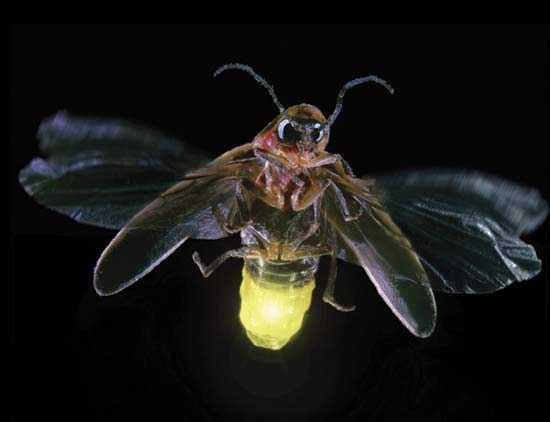
Fireflies had always been a mystery to scientists and their luminescence, a topic of research. The glowing fascination of fireflies led the scientists to experiment and eventually discovering the mystery behind its glowing. The phenomenon behind the glow of glow sticks is called chemiluminescence, whereas fireflies glow because of bioluminescence. The simplest explanation behind the science of glowing is; picture an atom and when it gets excited it releases heat and light. But for the glowing characteristic, scientists required just the light property without the heat referred to as ‘cold light’. This can be compared to the same clarification as to why fireflies glow. The chemiluminescence in glow sticks or light sticks is due to the chemical compound filled in it that emits light when they are bent and the glass ampoule is“snapped”, breaking the vial of a reactive compound which floats inside the exterior plastic encased tube.
How glow sticks work
There are many people who claim the patent on glow sticks. The story behind the invention of glowsticks goes that Edwin Chandross, a chemist at Bell Labs, invented the glow technology which used chemical energy to emit light. Many scientists took Chandross’ work and refined the process further. Unfortunately for Chandross, the patent for this Chemical Light Device was registered by Richard Taylor Van Zandt in the US Patents office.
Chandros found out that the most likely candidate compound for creating a glow effect is hydrogen peroxide; a highly reactive chemical. This is due to its ability to release a vast amount of energy in a short period of time. It is the best reactant for producing light without releasing energy from the fuel through burning. This large amount of energy is needed to release Photons which in turn gives off light. Peroxide is also a candidate because of its ability to react without giving off heat. When light and heat are combined together, they produce fire; a form which is capable of burning virtually anything. Edwin’s target was to avoid this type of reaction and instead find something similar to what the fireflies gives off – essentially to mirror the bioluminescence effect in nature. He discovered that Hydrogen Peroxide coupled with a catalyst oxalyl chloride produce the oxidation which when coupled with the dye, gives off a visible light. But the luminosity produced by this catalyst was just 0.01% of the current luminosity. It was because of this low luminosity that Chandros decided not to patent his discovery.
However, this breakthrough intrigued other scientists, and in the same year Michael M. Rauhut and his colleagues in American Cyanamid in Stamford, Connecticut communicated with Edwin Chandros and decided to continue and improve his work. They eventually devised a new type of ester to replace the oxalyl chloride but it still retained the Hydrogen Peroxide reactant that Edwin Chandross developed. They called this new discovery ‘Cyalume’ which is taken from the name sake of the company “Cyanamid”. They were able to produce the color green and the usual color of yellow, and eventually mixing dyes to create other colors. Shortly after, Cyanamid decided to sell off this technology to Omniglow.
Colors in a Glow Stick
Since the invention of glow sticks, scientists are trying to take it one step further by searching for different fluorescing dyes to make different colors of glow. Yellow and orange are said to be easy to make, whereas a good purple is the most difficult color to prepare. The glow color is obtained by adjusting the concentrations of the chemicals to brighten the glow or prolong its life. In some applications a dyed outer tube is used in place of the combination of interior chemical dyes.
In addition to the color, the duration of the glow can usually be a high intensity, short lived bright light, to several hours depending on the exact composition and quality of the chemicals inside. Some people say that a glow stick can be preserved by sticking it in a freezer. Indeed, cooling a glow stick will slow down the chemical reaction that is taking place inside it. So the glow won’t be as bright, but it will continue for a longer period of time.Conversely, heating a glow stick, such as by placing it in warm water, will speed up the chemical reaction. This will produce a brighter light. The glow won’t last nearly as long, however, because the reaction will use up all of the available hydrogen peroxide more quickly. More on this later.
Uses of glow sticks
As we have previously discussed, initially glow sticks were introduced only for the military and more specifically the US Navy.
Glow sticks are disposable, inexpensive, and waterproof. They can withstand high pressure and it’s these four properties that make them a favorite tool of divers, campers and military.Soldiers use them to define targets, alert others to danger, mark trails and assist with night visibility. Specialty glow sticks are also available that involve infrared radiation. These are not detectable unless you use equipment that picks up thermal imaging, such as night-vision goggles.
Although the industrial and military use is still prevalent, the use of glow stick for recreational purposes was not known at that original time. Gradually glow sticks attracted other uses because of their remarkable glowing property. They gained huge popularity in a short period of time and became an inseparable part of parties, celebrations, and special events. Glow sticks also add a special touch to concerts and events and make them even more memorable and are sold by several companies such as Virginia Toy and Novelty Company at www.VirginiaToy.com.
Glowsticking is a dance form that has gained wide popularity in parties. Glow sticks are used extensively in clubs, concerts and other forms of entertainment. They are commonly being associated with festivals and holidays such as the Mid-Autumn Festival in Hong Kong as well as the annual Burning Man event in USA.
Halloween combines the safety functions of glow sticks with the fun applications where both parents and kids use glow sticks when trick or treating and for parties. . In addition to adding to the spooky atmosphere from the eerie light produced by glow sticks, it allows parents and drivers to see where children are wandering about much more effectively than reflective tape.Even some creative minds designed a glow costume like the one seen below.
One recent invention from WeGlow Party is glowing cutlery. This novel invention was designed to make the table setting bright and colorful and also allow users to decorate, dine, party, and then play all with the glowing cutlery.
In other recreational activities, glow sticks are used in Night golf and to play Frisbee by marking trails and equipment. Children use them to play night tag and make creative games as well. The uses are essentially endless.
Glow sticks are also extremely useful in emergency situations. Even when there are explosives, gas or chemical leaks the sticks can be used as they do not use electrical filaments, batteries and do not cause sparks to ignite the dangerous substances.People use glow sticks instead of flares to alert others about broken-down vehicles and accidents. Glow sticks are a safe lighting alternative after electrical failure, bad weather and natural disasters. They are simple to light, easy to store and do not have an open flame that could cause a fire. As glow sticks do not have any electrified components, they are safe to use in potentially explosive settings.
All these reasons were the deciding factor in the rising popularity of glow sticks. Today most people associate glow sticks with glow sticks, glow necklaces, light sticks, glow bracelets; as inexpensive ways to add some color and flair to a special event.
Are glow sticks safe?
Glow sticks are extremely safe and fun to play with as long as the precautions are followed and the chemicals are kept inside. But in general, glow sticks are extremely easy and safe to use; you just need to bend them and watch them glow. Glow sticks require no maintenance, batteries or electricity and are completely water proof.
The main advantage of glow sticks is that they produce no heat, flame or sparks. The liquid light source inside the glow stick is non toxic, no heat or harmful radiation is produced although it may be flammable. Contact with the eyes or ingesting the fluid should be avoided, as it will cause irritation. There is also a possibility of allergic reaction; hence any contact with the fluid must be avoided.
A good quality glowstick is a durable one such as the WeGlow Brand by WeGlow International. There is big difference in the quality among competitors. Generally speaking, the longer the life span of a glow stick, the better is its quality which is a result of the ingredients used. Normally a glow stick lasts for around 5 to 12 hours, depending on its size, color, type, and the air temperature.Cheap glowsticks often mean low quality glowsticks. It’s easy to compare the quality, by testing as you can see from the photo below.
Once activated, the glow sticks cannot be turned off and will continue to glow until the chemical reaction has finished.
Can I freeze my glow stick and use it later?
By adjusting the concentrations of the chemicals, manufacturers can produce glow sticks that either glowintensely for a short amount of time or bright and consistent for an extended length of time. Chemical compositions can also be adjusted to perform in hot or cold climates. Warming the chemicals intensifies the chemical reaction and makes the glow light stick brighter for a shorter period of time. On the contrary, cooling a glow stick slows the reaction a small amount and causes it to last longer, but the
light is dimmer. This can be demonstrated by refrigerating or freezing an active glow stick; when it warms up again, it will resume glowing – although never as bright as the original effect. Dyes used in glow sticks usually show fluorescence when exposed to ultraviolet light which is why a spent glow stick may therefore shine under a black light.
Conclusion
From an army utility, to regular use at parties, and in your emergency prepared kit, glow sticks sure have come a long way. Their evolution and progression in to our lives in different forms has made glow sticks immensely popular worldwide. Getting good quality glow sticks, glow necklaces, or glowing forks is an essential prerequisite for any party or any other activity which one seeks color and excitement. There is a lot of scope for innovation and development when it comes to glow sticks, so all you glow sticks fans keep innovating and experimenting!

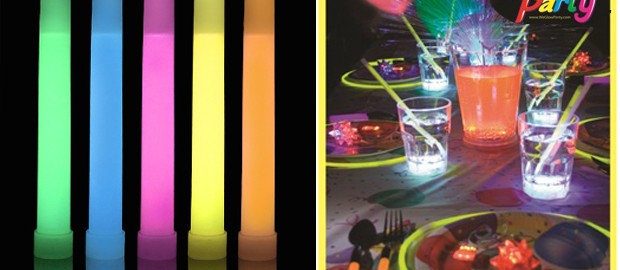






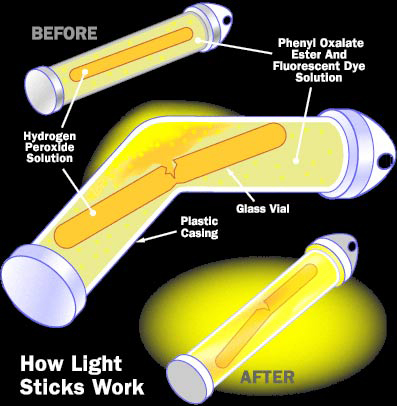
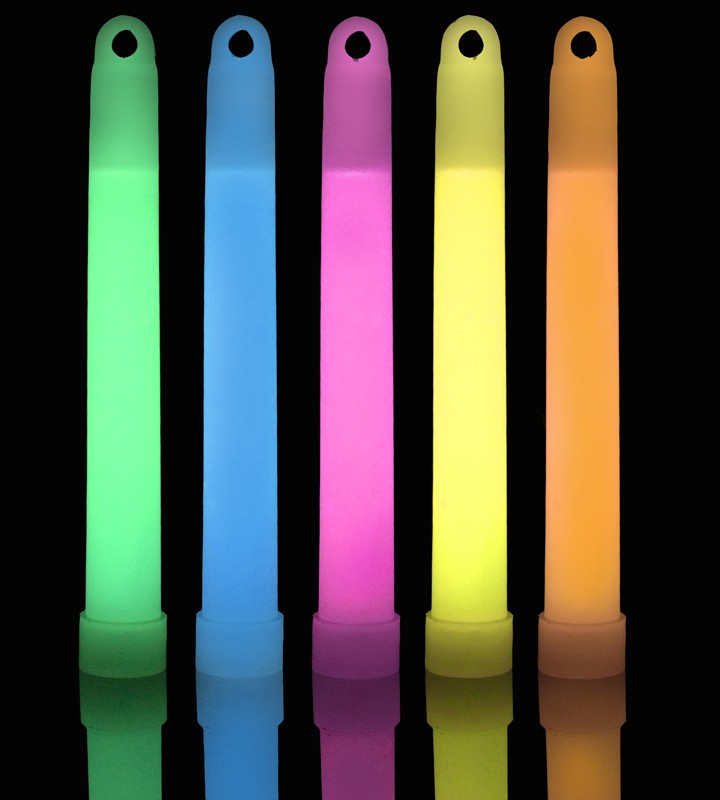


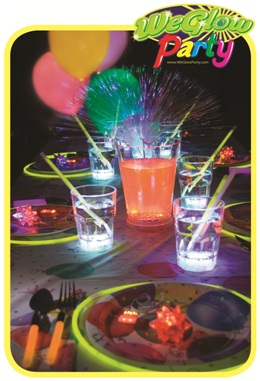



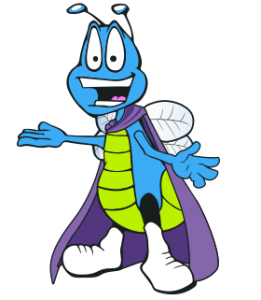


Comments are closed.